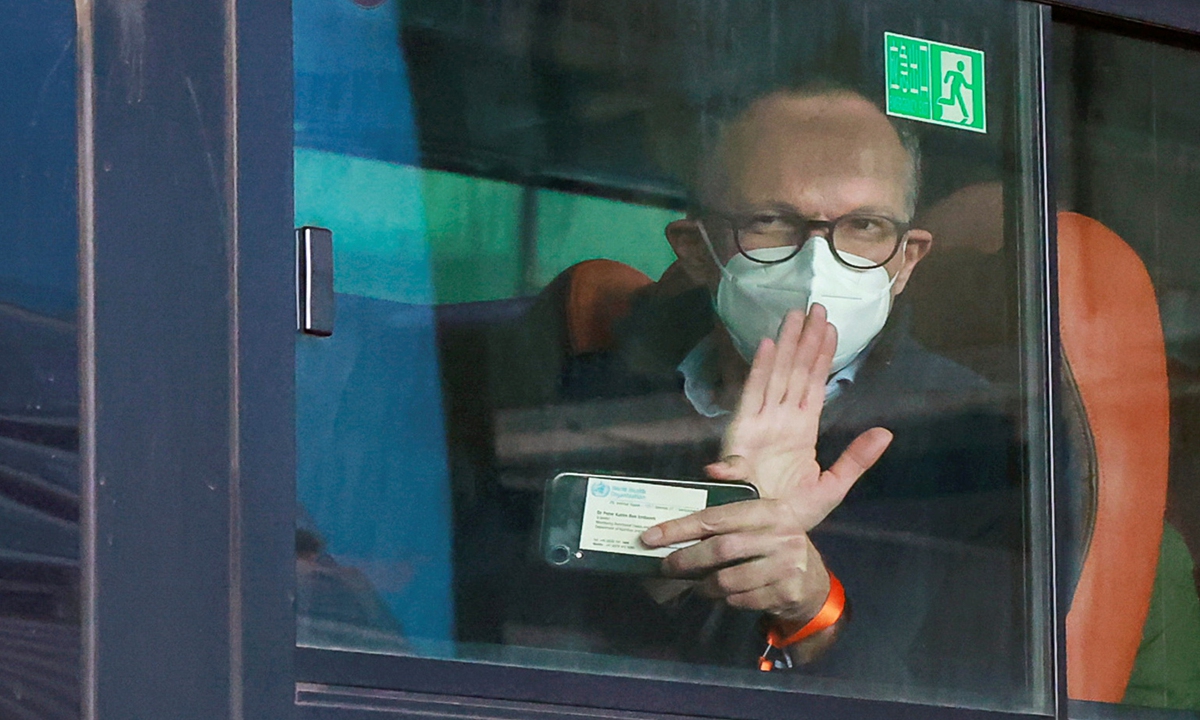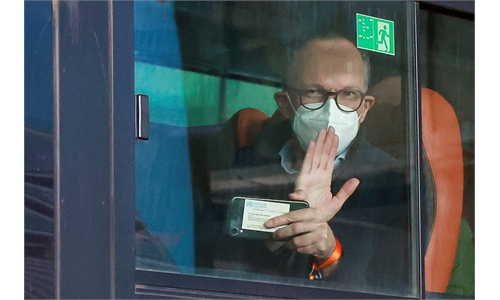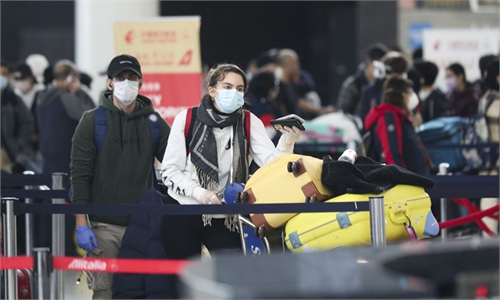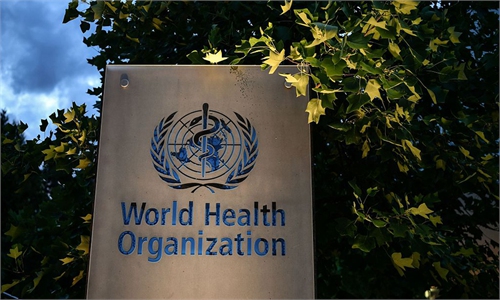Epidemiological survey of travel history of Wuhan’s first cases can help WHO with virus origin-tracing: expert

Peter Ben Embarek, a member of the WHO team tasked with investigating the origins of the COVID-19 pandemic, waves from a bus while leaving Wuhan Tianhe International Airport in Wuhan on Thursday. Photo: Reuters
As the World Health Organization (WHO) expert team has arrived in Wuhan, Central China's Hubei Province, where the first COVID-19 outbreak was reported in China, a Chinese expert suggested that to aid the WHO's investigation into the origin of the virus, there should be a comprehensive epidemiological survey into first 10 or 20 patients in Wuhan, to find whether they were locally infected or have any links to overseas travel or to foreigners who came to Wuhan for the Military World Games in October 2019.
A senior official of the WHO on Friday thanked China for its cooperation, while stressing the probe is complex and it will be difficult to reach a final conclusion.
Yang Zhanqiu, deputy director of the pathogen biology department at Wuhan University, suggested that the epidemiological investigation into the first 10 or 20 cases in Wuhan could help figure out how the virus was transmitted and even where it came from.
For example, the epidemiological investigation can show whether these people traveled overseas. If so, it may be possible that they were infected while overseas and an investigation into where they went on their travels should be followed up, Yang told the Global Times on Sunday.
Also, as conjecture about US military personnel who went to Wuhan for the Military World Games bringing COVID-19 to China has made the rounds worldwide, investigating if the first cases in Wuhan had contact with the US military delegation is necessary, Yang said.
Two days before the arrival of the WHO expert team to Wuhan, the health department of the state of Espirito Santo, Brazil revealed the latest study which found the presence of IgG antibodies, specific to the COVID-19 virus, in Brazil in December 2019, which Chinese experts said provided more hard evidence that the virus was circulating outside China earlier than previously believed.
The Xinhua News Agency reported on Wednesday that immunoglobulin G (IgG), the most common type of antibodies which takes time to form in the wake of an infection, were detected in 210 people, of which 16 cases suggested the presence of the coronavirus in the state before Brazil announced the first officially confirmed case on February 26, 2020. One of the cases was seen on December 18, 2019.
Antibody test for IgG detects IgG antibodies that develop in most patients within seven to 10 days after symptoms of COVID-19 begin. IgG antibodies remain in the blood after an infection has passed. These antibodies indicate that the patient may have had COVID-19 in the recent past and have developed antibodies that may protect the patient from future infection.
The health department stated that it takes about 20 days for a patient to reach detectable levels of IgG after the infection, so it could have occurred between late November and early December 2019, according to Xinhua.
Yang said that the case of positive IgG antibodies collected in December 2019 indicates that the case was infected with the coronavirus likely one week, one month or even much earlier as the positive IgG antibodies cannot help date back to a certain period of time.
Yang noted if a case is positive for immunoglobulin M (IgM) antibodies, the first type of antibodies to appear in response to an infection, it can be confirmed that the case was infected with the virus about a month before the test.
If the case has very low IgG antibody levels, it could not be confirmed to have been infected with the COVID-19 virus as it could have been infected with other coronaviruses, he added.
Brazil is not the first country to have detected the presence of COVID-19 presence beyond China earlier than thought.
A study by the National Cancer Institute of Milan, Italy shows, the coronavirus was circulating in Italy in September 2019, Reuters reported in November 2020.
A US study has found COVID-19 infections in the US in December 2019, providing further evidence indicating the coronavirus was spreading globally before the first cases were reported in China, Bloomberg said in December.
The studies support the theory that the virus had multiple birthplaces around the world, Yang said.
Yang noted that Wuhan was one region where the coronavirus broke out, but whether or not the region was the birthplace or sole birthplace of the virus had yet to be confirmed.
Scientific research showed the coronavirus had genetic differences in different regions around the globe and seemingly separate pathogenicity and lethality, Yang noted.
That would support the theory that the virus broke out of multiple regions not just China, the Chinese scientist said.
Wang Guangfa, a respiratory expert at Peking University First Hospital, called on the WHO experts to visit other countries where the coronavirus reportedly emerged earlier than China.
However, US Secretary of State Mike Pompeo on Friday claimed previously unreported intelligence that may link to the Wuhan Institute of Virology, to the start of the global coronavirus pandemic.
Pompeo also called on the WHO to fully investigate the possibility that the deadly virus accidentally escaped from the lab in fall of 2019, according to the US Department of State. The department did not reveal evidence for its claim.
Yang criticized Pompeo's claim as saying that the investigation of the virus origin tracing is a serious scientific issue, and a US politician's claim without solid evidence can be easily regarded as a political stunt.
It is highly likely that the Trump administration is smearing China with all-out efforts during its last few days in office, Yang noted.




